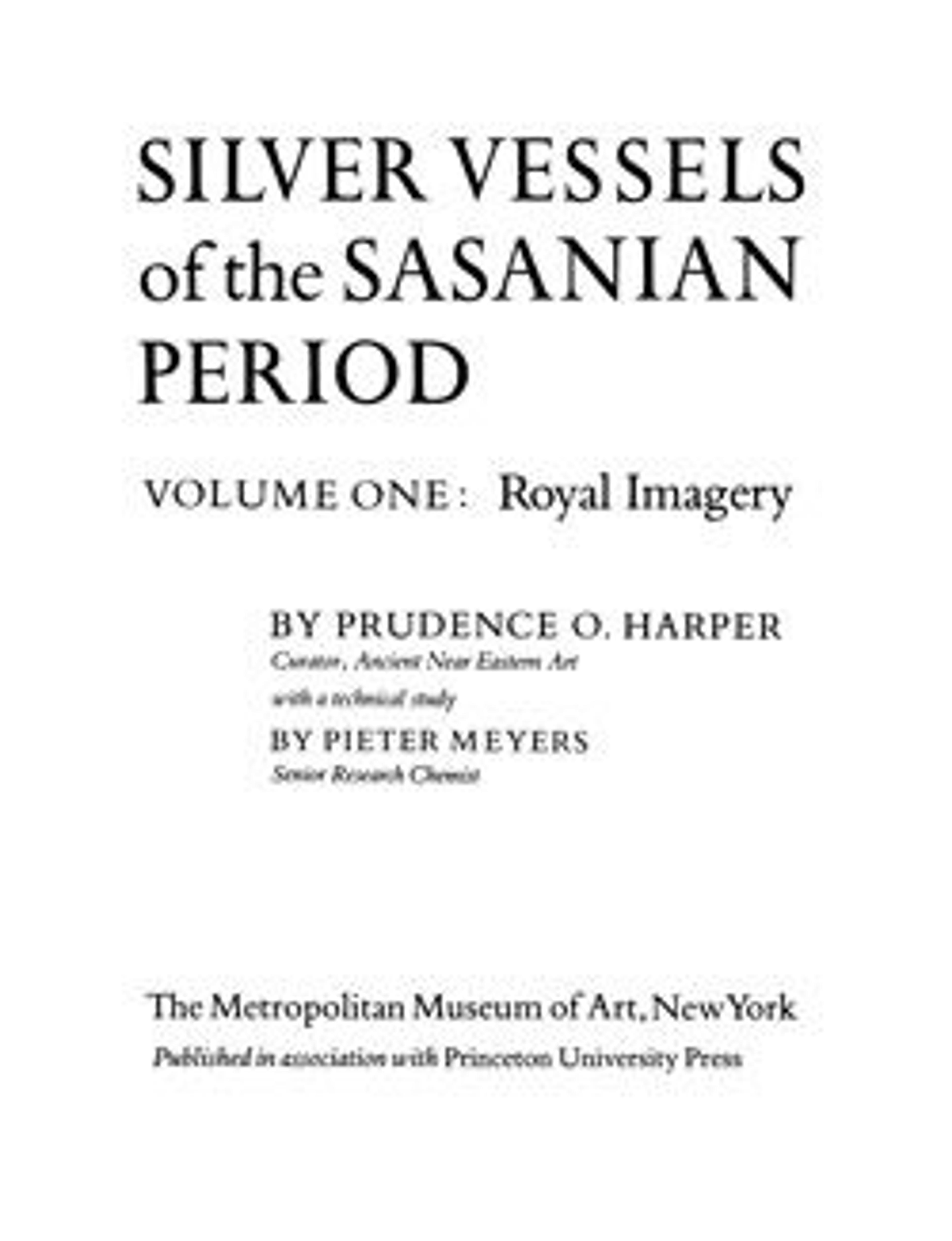Plate: the king Yazdgard I, slaying a stag
The king as hunter became a standard image on silver plates during the reign of Shapur II (r. 310–379). The motif symbolizes the prowess of Sasanian rulers, and these royal plates were often sent as gifts to neighboring and vassal courts. The scene on this example is striking: the king is depicted standing and slaying a rearing stag, whose protruding tongue indicates that he is either dying or already dead. The king is identifiable as Yazdgard I (r. 399-420) due to his crown, although it is topped with a striated globe rather than the cloth-covered one with which he is normally represented. His beaded skirt resembles those shown on the rock reliefs of Shapur II (r. 310-379), Shapur III (r. 383-388) and Ardashir II (r. 379-383) at Taq-i Bustan, Iran. The crescent-tipped spear with a counterweight in the form of a human fist is unique amongst weapons represented on Sasanian silver plates.
Sasanian silver plates were usually hammered into shape and then decorated using a variety of complex techniques. On this example, gilding covers the entire design except for the king’s face and hands, and pieces of metal were added to create high relief in several areas. The inscription on the foot is too damaged to be legible, but most likely mentions the king’s name and the plate’s weight.
Sasanian silver plates were usually hammered into shape and then decorated using a variety of complex techniques. On this example, gilding covers the entire design except for the king’s face and hands, and pieces of metal were added to create high relief in several areas. The inscription on the foot is too damaged to be legible, but most likely mentions the king’s name and the plate’s weight.
Artwork Details
- Title: Plate: the king Yazdgard I, slaying a stag
- Period: Sasanian
- Date: ca. 399–420 CE
- Geography: Iran
- Culture: Sasanian
- Medium: Silver, mercury gilding
- Dimensions: 1 5/16 × 9 3/16 × 9 3/16 in., 1.6 lb. (3.3 × 23.4 × 23.4 cm, 713g)
- Credit Line: Harris Brisbane Dick Fund, 1970
- Object Number: 1970.6
- Curatorial Department: Ancient West Asian Art
More Artwork
Research Resources
The Met provides unparalleled resources for research and welcomes an international community of students and scholars. The Met's Open Access API is where creators and researchers can connect to the The Met collection. Open Access data and public domain images are available for unrestricted commercial and noncommercial use without permission or fee.
To request images under copyright and other restrictions, please use this Image Request form.
Feedback
We continue to research and examine historical and cultural context for objects in The Met collection. If you have comments or questions about this object record, please contact us using the form below. The Museum looks forward to receiving your comments.
